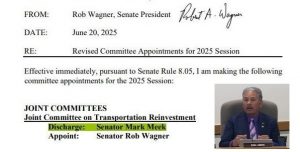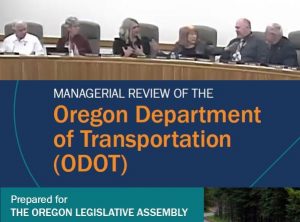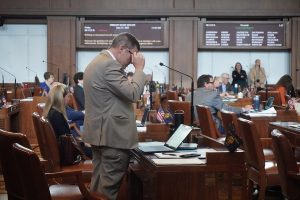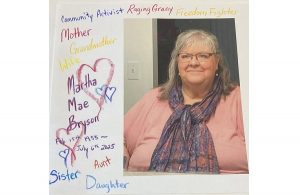Public recommends alternatives to EWEB plans for nuclear, biomass
24 min read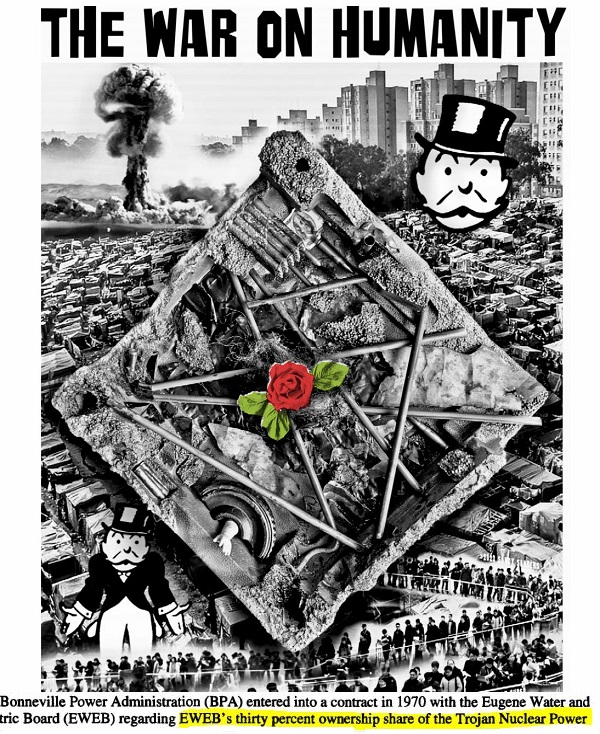
EWEB is weighing all options for carbon-free electricity, including biomass and Small Modular Nuclear Reactors (SMNR). Here is public comment from July 11 on their Integrated Resource Plan.
Cathryn Chudy: My name is Cathryn Chudy and I’m testifying on behalf of Oregon Conservancy Foundation. OCF opposes inclusion of SMNRs for the following key reasons. In 1980, Oregon voters adopted a ballot measure law requiring that before a nuclear power plant can be built and operated in our state, there must first be a permanent federal licensed repository for the storage of its high level nuclear waste, followed by a statewide vote of the people. This law was adopted after PGE and EWEB’s Trojan nuclear plant had already been built and operating in Oregon.
[00:00:48] John Q: EWEB owned 30 percent of the Trojan plant.
[00:00:50] Cathryn Chudy: Forty-three years later, highly radioactive spent fuel still sits in dry casks at Trojan’s nuclear plant site near Rainier, Oregon. There are still no permanent federally-licensed high-level-waste repository capable of safely storing this nuclear waste. EWEB’s promotion of proposed SMNRs ignores the fact that if these unproven advanced reactors do operate, they will add still more high-level nuclear waste in need of permanent repository storage.
[00:01:20] EWEB informs ratepayers that it can legally obtain power from advanced nuclear reactors operated out of state. EWEB fails to tell its rate payers that it is also actively seeking to repeal Oregon’s 1980 ballot measure law. In March 2023, EWEB testified in support of House Bill 2215, which, if enacted, would have cleared the way for SMNRs to be built and operated in Oregon.
[00:01:47] John Q: That EWEB letter, dated February 13, notes Oregon’s ban on new fossil fuel power plants, and asks that all carbon-free options be available.
[00:01:57] Cathryn Chudy: By supporting this legislation, EWEB is promoting creation of more high-level nuclear waste without a permanent radioactive waste repository, nor a statewide vote of the people. This does not meet EWEB’s IRP priority of environmental responsibility. OCF urges EWEB’s board and staff to perform a more diligent and thorough analysis of available renewable energy, conservation, and energy efficiency alternatives, as well as the veracity of the nuclear industry’s claims regarding SMNRs.
[00:02:32] Vincent McClellan: I would like to speak out against nuclear power… the levelized cost of electricity for nuclear power is some of the most expensive that is currently available and will raise rates for the entire U.S. grid. That’s been proven over and over again; the facility that just went online in Georgia kind of proved that. There was cost overruns. It took an extra several years to build the facility.
I don’t believe that nuclear power is in the best interest of the citizens of Eugene, and I’m kind of at a loss to why it’s even being considered. And I don’t want to be too redundant, but I also have an issue with the storage, like was already mentioned, that the Trojan nuclear power plant, which has now been dismantled, still has all of its spent nuclear fuel rods still in place close to the Columbia River in Oregon. No permanent storage since the federal government reneged on their promise to provide permanent nuclear waste storage. We don’t have anywhere to put this type of material.
[00:03:41] And we currently live in a very highly seismic area. We’ve already learned from the Japanese disaster, even a really well-thought-out nuclear reactor, well-engineered, can be damaged by seismic activity. I don’t believe that a nuclear reactor, even a small one, even the current versions of nuclear reactors, should be sited in Oregon at all.
[00:04:06] And I’d also like to bring up again, I’m a solar contractor, many of you know me here. I’d like to bring up that EWEB is still currently telling us solar contractors that you don’t need power coming from solar electric systems in our area. And so they’re still limiting the commercial appliance ability to put up more than 25 kilowatts per meter as a net metered system. And the generation program, which is great, but that adds a lot of cost and expense to my clients and doesn’t make the financial scenario, the solar electric system, work out very well.
[00:04:45] So, I’m confused. On one hand, you’re limiting power going into the grid and saying, you don’t need it. On the other hand, you’re looking at bringing in a very dangerous form of electricity generation.
[00:05:02] Eva Edelman: My name is Eva Edelman. It’s just incomprehensible to me, like, instead of having alternatives, we’re going, like, the proposal to study nuclear as a possibility, that is, like, nuclear waste leaks into the environment. It’s been leaking at Trojan, it leaks at Hanford where the proposed—Hanford is like a multiplex of nuclear waste. It’s like amazingly contaminated. Nuclear waste, like, it’s in the water in the Columbia, right? And, like, you add a little nuclear modular, small nuclear power plant, that supposedly will prevent a meltdown, like we’ve heard this before, that it automatically, well we’ve heard things, there’s all these safeguards, but that doesn’t mean they really will exist in every single case. That hasn’t happened. Fukushima, you know, it just doesn’t happen.
And meanwhile, children, our children, our people, like, how much thyroid disease is there in America and the world? How much cancer? Like, skyrocketing rates of cancer. We had a mini-nuclear war in Nevada. The amount of nukes that were tested that leaked into the environment. And now we have the children’s IQ going way down. Low thyroid, thyroid, radioactive iodine affects, you know, the children. It gets all over America. I grew up in New York and there was radioactive iodine in New York from those little tests.
Like if this little mini-reactor had a problem and exploded the waste at Hanford? You know, it’s inconceivable. That’s like worse than Fukushima to explode all the waste stored at Hanford. So, we’re a nuclear-free zone. We shouldn’t even be considering funding a study of something that voters reject. We said, we don’t want nukes in this state and this county also unless there’s something to do with the waste. Well, that isn’t on the horizon. And meanwhile, it’s like totally going against the voters. What are you guys thinking?
[00:07:27] Victor Odlivak: I am Victor Odlivak. Why in the world would we want to do nuclear? Hanford is the most toxic place on the planet. That’s no exaggeration. You add up all the wastewater and all the stuff there and all the waste, I mean, we just don’t want to touch it. This is the fourth time the people of Eugene are saying ‘No nukes.’
[00:07:58] You want to know? Put it on the bill: Yes, No, Never. That’s what you need to do. Because we don’t want it. We’ve had enough. We’ve had enough sickness, cancer, etc., and there’s no place you can put it. The half-life of plutonium is 27,000 years. The half-life of uranium is 4.5 (billion years), so you got between 27,000 and 4.5 billion years, and you got Cesium-137, and iodine, and all the other things thrown in. Where on earth can you put it that you can guarantee it could be safe for four and a half billion years? For 27,000 years? Remember, there was an ice age 12,000 years ago. So, no, you don’t want it.
[00:08:49] Steven Fuller-Rowell: My name is Steven Fuller-Rowell. I’m active with several groups that identify false solutions to the climate crisis. Two of these false solutions appear in the IRP: nuclear power and biomass energy. These are not just false solutions, but they also distract from the increasingly urgent need to identify and act on real climate solutions. They should therefore not be included in the IRP or receive ratepayer funding from EWEB.
[00:09:18] First off SMRs. They seem to be no more than an opportunistic rebranding of old Big Nuclear. Small appears to be the new sales pitch for the same failed technology. Beside poor cost per kilowatt-hour, dubious safety, and poor carbon life cycle of SMRs in the fuel, there’s also the elephant in the room: Nuclear waste.
[00:09:41] As others have said, there’s no realistic solution for what to do with the waste from Trojan. The hot mess lives on in Trojan in a pit. This suggests a conclusion for those considering investment in nuclear: “When you find yourself in a hole, stop digging.” Other supply alternatives should be prioritized to fill the need for flexible energy supply.
[00:10:03] And then biomass. This was categorized as renewable energy resource by the IPCC and the renewable Oregon renewable portfolio, or it would’ve made a use of otherwise unused biowaste, biomass waste. Now the tail is wagging the dog. Forests in the Southeast are being clear cut for pellets, or being exported to Europe as a replacement for coal in plants operated by Drax, and Drax is coming to Longview. The timescales of renewability do not match. A forest can be clear-cut in days. It takes decades for a forest to regrow to the stage when it’s sequestering significant amounts of carbon.
[00:10:44] Biomass is not a clean fuel. It burns worse, carbon emissions are worse than for coal. Biomass emits energy, emits carbon at every stage from the forest to the burner. Carbon capture from biomass burning, BECCS, is turning out to be less than feasible. Other emissions, other pollutants are also significant for those of us living downwind from the former Seneca cogen plant. The new owner of Sierra Pacific plans to double production, and this will make things worse. Timber industry biomass needs to stay in the forest to maintain soil fertility.
[00:11:22] In conclusion, nuclear energy and bioenergy are both false climate solutions. They divert attention and investment from real climate solutions. Please instruct staff to take them out of the IRP.
[00:11:34] Sandy Sanders: I’m Sandy Sanders and that we are talking about nuclear now after coming through the 80s and eliminating this, I thought, here we are again, talking about a destructive ecocidal technology that is just should be buried deep, never touched again, the bombs, the radiation, the plants, it’s all a travesty of reality.
[00:11:57] Five years ago, NuScale tried to come with their little mini-nukes and get them through the legislature. My wife and I made this postcard and were with a group of people that nixed it in the Senate, and we don’t want to see this anymore. The people in Oregon have voted against it four times. We don’t want it. It’s our right to say no. Let us vote on it if we have to.
[00:12:17] The sun is free. Why aren’t we doing, putting all of our money in finding out how to turn solar energy into easy, free electricity distributed on every rooftop? Everyone will be generating electricity. We could share with one another. And then the problem is that centralized control of energy would not make money for corporations.
[00:12:39] Now, why this is a public entity? Why would you guys worry about such a thing? It’s really strange to me that we’re not going all solar. This is a doable thing. Let’s do it.
[00:12:49] I saw this article. It was published on the 4th by PBS about dumping Fukushima’s nuclear waste material into the Pacific Ocean. China is not going to buy fish from that area in the ocean. Why are they doing that? Because it’s poison. Why are we talking about putting poison in the state next to us? Are we going to put it in the Willamette River? Are we going to put it in the Columbia? This is all insane. I’m an artist and my friend Ralph and I had a show at New Zone Gallery in May.
[00:13:19] It’s called “The War on Humanity.” And for us, this is part of this corporate 1% rich person war on humanity to extract as much profit and destroy as much in the process as they can possibly get away with. You all are working for the public. This is not for the rich and stupid corporate ideas like NuScale. Please stop this is insanity.
[00:13:46] Debra Higbee: Hello, my name is Debra Higbee and you’re faced with a decision whether to include nuclear energy in the IRP or biomass, and I’m here to speak about nuclear energy, but I urge you to not waste our money on either one of these. Nuclear energy does not pass the test of affordability, reliability, or environmental responsibility.
[00:14:07] Any ratepayer money used for speculative small reactors represents an opportunity cost for the things we care about, such as renewables, conservation, storage, and etc. Is nuclear power going to help the United States decarbonize its energy supply and fight climate change? Probably not. That’s the conclusion of a remarkable new study published in the Proceedings of the National Academy of Sciences in early July.
[00:14:34] It’s remarkable because it’s not written by opponents of nuclear power, as one might expect given the conclusion. Authors are, in fact, extremely supportive of nuclear and view its loss as a matter of profound concern. They explained that as costs for SMRs go up, renewable energy technologies seem to be on a trajectory toward subsidy independence. They are falling in cost at ridiculous rates, not just wind and solar, but storage, EVs and other grid edge technologies as well. Policy can accelerate their progress or impede it, but at this point it cannot stop them. They have a momentum of their own, purely on economics.
[00:15:22] Nuclear is in a different situation. Its current trajectory is declined. It needs lots and lots of new policy and public money to reverse that trajectory. That is a much more difficult political lift, better or worse. Renewable energy is the name of the game for the next few decades. This new report explains small modular reactors are not environmentally responsible.
[00:15:48] The Proceedings of the National Academy of Sciences also explained that new reactor waste is higher in volume and radioactivity per unit energy produced than large nuclear power reactors. Small reactors will not make less waste. The most recent Intergovernmental Panel on Climate Change report that came out in March 2023 Shows that the most effective ways to limit climate change are to use solar and wind power to enhance energy efficiency, to stop deforestation, and to reduce methane emissions.
[00:16:20] The report reveals that the least effective ways to limit climate change are nuclear power and carbon capture and storage.
[00:16:27] Sid Baum: My name is Sid Baum, and I grew up in Portland in the 1960s and early 70s. During that time, I observed the building of the Trojan nuclear power plant along the Columbia River northwest of Portland. On a clear day, we could look east and see Mount Hood, or look northwest and see the Trojan Tower rising above the river.
[00:16:48] Finally, after years of construction delays and cost overrun in May of 1976, Trojan began generating commercial power. Portland General Electric was a two-thirds owner of the plant, and EWEB was a 30% owner.
[00:17:04] You may know the rest of the Trojan story: Citizen protests starting in 1977, increasing in 1978 after the plant was found to be on a major geological fault line, and when public awareness of the problem of nuclear waste disposal was growing. A combination of citizen activism and Trojan’s ongoing expensive maintenance and repair issues and leaks led to its permanent closure in 1993.
[00:17:31] Since EWEB is now considering returning to the use of nuclear power, something has changed in how you view the nuclear industry. You see the new small modular nuclear reactors as somehow very different from Trojan or Hanford.
[00:17:50] But how different are they? The towers are 75 feet tall rather than the 500-foot height of Trojan. Smaller is easier to move and build, but are SMNRs safer? Don’t they still generate the same kind of high-level radioactive nuclear waste as Trojan? And Oregon law, wisely approved by voters in 1980, would have to be repealed or altered in order to allow a new nuclear power plant to be sited and built.
[00:18:18] NuScale, the Oregon based SMNR company, was behind bills in the Oregon legislature that would have done away with the requirement to find an adequate repository for the disposal of nuclear reactive waste produced by their plants. In the 40-years plus since the statute was passed, the nuclear waste disposal problem has not been solved.
[00:18:39] The climate crisis we live in doesn’t offer an excuse to create new public safety risks to solve the problems of rising global temperatures. Questions that you EWEB commissioners and employees should be asking yourselves are: Is nuclear power a solution to the issues of variable renewable energy, i. e. wind and solar?
[00:18:59] Will the nuclear industry operate its plants safely and cost-effectively and solve this waste problem? Or will the solar industry, producer of real clean energy, develop battery systems capable of storing power generated during daylight to be available at night? Taking a look at the battery storage systems for solar energy currently being developed may answer these questions.
[00:19:22] Peter Dragovich: Earlier versions of your IRP a few months ago had basically no reference to geothermal. The word occurred twice. Once in a dismissive sentence and the other time in the glossary in the back of the IRP.
[00:19:35] Since that time, geothermal has been repeated, that word has been repeated more in the document. But it’s in response to public comments that have been made encouraging that you look closer at geothermal. There have been some, and I’m sure you’re aware of this, and I encourage you to look into this further.
[00:19:54] And if not into this IRP, put into future IRPs. That drilling technology has made very significant gains. The point where drilling down six miles is feasible and they’re commercially under $69 a megawatt, commercially feasible to drill down six miles.
What does that get in most areas of the world? You can get down to enough heat under the surface of the earth in three miles to make geothermal feasible. So no longer is geothermal tied to geologic formations where heat is near the surface. And what that opens up a lot of possibilities, including siting geothermal at, for example, shuttered or scheduled-to-be-shuttered coal plants where your transmission lines are already there.
[00:20:43] So I would urge you strongly to look more closely at geothermal in the future. And then my only other comment on the IRP is to take SMNRs out completely. That’s, I think that’s off the table, in my opinion. I think the public opinion that I’m aware of supports that view also.
[00:21:05] Mark Robinowitz: Stan Thompson was a physicist who lived in Eugene, and he said the most intolerable reactor may be one which comes successfully to the end of its planned life, having produced mountains of radioactive waste for which there is no disposal safe from earthquake damage or sabotage. A half century ago, EWEB sought a reactor north of Eugene.
[00:21:30] And then planned a location in the tsunami zone north of Florence. After citizens managed to defeat this plan, EWEB’s leaders admitted that the defeat was good for the utility. And absolutely nothing has changed about boiling water with fission since then. There is no way to turn off radioactive waste except time.
[00:21:53] Lots of it. NuScale and all the other small modular nuclear reactor designs create the same array of fission products that their larger cousins create. We should have learned from WPPSS in the 1980s that reactors are a recipe for bankruptcy. When I first learned to use solar panels a third of a century ago, the first lesson was: “Use less electricity.”
[00:22:18] And this applies to the society, not just to the household level. In 2006, EWEB paid for Richard Heinberg to speak in Eugene, who was with Post Carbon Institute. Some of you may remember that. Since then, world population has increased by a billion and a half. More than the 1.2 billion the world had in 1859, when the first oil well was dug in Pennsylvania.
[00:22:42] Uranium is also in decline. Uranium mining peaked in the U.S. in 1980, and almost all of it is imported from places like Russia and Central Africa. Mining is not renewable. It’s why gold mining ended in Cottage Grove. The ore is gone. Joke: Pretending that a reactor can solve the problem of boiling water with fission is psychological bargaining.
[00:23:07] We need acceptance that we live on a finite planet and need to adapt to constraints. Dr. John Gofman was a veteran of the Manhattan Project and first biomedical director at Lawrence Livermore, and he said, quote, “Licensing a nuclear power reactor is licensing random premeditated murder, because radiation produces cancer and the evidence is good all the way down to the lowest doses.”
[00:23:34] I recently learned about Brandolini’s Law. To quote: “The amount of energy needed to refute bull**** is an order of magnitude bigger than that needed to produce it.” So you’re going to get a half-hour song and dance on how wonderful new reactors would be that create the old waste. But you need to give a lot more credence to the eight decades of reactor construction that has raised the background level of radiation on Earth.
[00:24:05] Jim Neu: Small modular reactors appear to be giving a new renaissance to the nuclear industry, branding them durable, reliable, prefabbed, and below ground.
[00:24:13] Although they would provide consistent base load power, the NuScale design is the same as the Manhattan Project reactor, creating an endless life cycle of waste. The larger the reactor, the less costs are involved. According to the Lazard study, SMRs are more expensive per megawatt hour.
[00:24:32] There’s also the threat of nuclear proliferation and accidents such as Three Mile, Fukushima, and Chernobyl. All of those sites are still contaminated. And again, the waste issue where SMRs create more waste than larger reactors. According to the DOE, existing conventional reactors create greater than 2,000 metric tons of radioactive waste per year with on-site storage because states do not want to become national depositories.
[00:24:58] New Mexico just passed legislation banning nuclear waste storage. Locally controlled power and storage should be the direction of EWEB and the IRP future plan. We need to establish 15 to 20% locally-controlled power through green hydrogen and battery, and through solar and battery utilizing residential and commercial rooftop, as well as parking lot systems.
[00:25:19] Green hydrogen and storage is an alternative to nuclear, provided that there is a sufficient water source and fossil fuels are not involved in the process. Another less expensive and shovel-ready alternative to SMRs would be virtual power plants that could be funded by IRA and state funding. Virtual power plants are a network of battery systems that work in tandem generated by rooftop and community solar that can add megawatts of capacity to the grid when demand is the greatest.
[00:25:48] This is a continual source of power. According to an RMI forecast, U. S. potential for virtual power plant capacity by 2030 would be 62 gigawatts: 20 gigawatts or 32% from residential, (10 gigawatts or) 16% from small battery storage, 17 gigawatts or 28% from EVs, and 15 from commercial sourcing. There are currently thousands of virtual power plant community participants in California, Utah, and Vermont.
[00:26:21] In California, PG& E and Sunrun are producing 30 megawatts via 7,500 customers. And sonnen and Baker Electric Home Energy on 2025 will produce 220 megawatts through 5,000 customers. In Vermont, a similar latitude as Eugene, Green Mountain Power has 4,000 battery customers and in Hawaii, in coordination with Swell Electric, has an 80-megawatt VPP virtual power plant that serves three islands.
[00:26:49] There are working alternatives to expensive and forever nuclear waste of SMRs. Please consider renewables and locally controlled power sourcing.
[00:26:57] Steven Baker: I’m strongly opposed to EWEB investing in potential nuclear energy projects for a number of reasons. EWEB needs to invest in more renewable energy projects. Germany currently generates more than 50% of its electricity from renewable energy sources, wind and solar, and is easily able to manage the grid.
[00:27:21] Similarly, Denmark generates 55% of its electricity from renewable energy, mostly wind, and manages the grid. Renewable electricity generated from solar wind by EWEB and BPA is much, much smaller share of electric generation than these countries produce now. So there’s ample ability to add more renewable energy and still properly manage the grid and meet consumption requirements.
[00:27:47] Furthermore, EWEB and BPA have hydroelectric projects that can be used when needed to meet intermittent issues with electricity demands when needed. EWEB needs to increase their investment in solar and wind projects. There are a number of promising technologies for stationary storage of electricity that are being developed, tested and implemented.
[00:28:09] These storage systems allow electricity from solar and wind to be saved for later use to mitigate potential problems the intermittent nature of solar. Demonstrated by Germany and Denmark, these storage technologies are only needed when EWEB and BPA start to generate a much larger share of their electricity from wind and solar, so they aren’t needed right now, but EWEB should be tracking these electric storage developments. Consider participating in some trials.
[00:28:40] Finally, the U.S. still does not have an approved-for-operation nuclear waste facility. Oregon law prohibits new nuclear facilities unless a suitable waste facility has been built. Otherwise, EWEB staff and its board are skirting state law by investing in nuclear facilities in Washington.
[00:28:59] Also, EWEB board members making new investments in nuclear energy are just passing on these problems to their children and grandchildren.
[00:29:08] We live in an unstable world. Considering all the existing pools of spent nuclear fuel at power stations and how inviting these would be as potential terrorist targets, we don’t need to create more of this.
[00:29:22] Elliott Grey: I’m going to say that I find it ironic that EWEB is talking about investing or in a feasibility study in a technology that is completely untested at this point, and is unwilling to update its billing system so that it can take advantage of distributed solar solely because its IT system and its customer service system are unwilling to update the system.
[00:29:52] I’ve been in Eugene since before Trojan started, and saw the promises of cheap, cheap energy, and I saw the boondoggle that taxpayers are still funding, and I saw that Westinghouse is still making profits from that.
[00:30:11] Oregon voters banned nuclear power and giant corporations are now trying to sell us clean, safe, unproven power. There’s only three small modular reactors in the world. They’re in China, Russia, and India. The other ones, there are none. The power that they’re talking about selling us is technology is just the same technology, only modified a little bit. And they’re trying to sell us that again.
[00:30:42] They have not changed and updated. Safety is all things. Nuclear waste has not been figured out. Let’s talk about nuclear waste. Right now, Hanford is leaking. Leaking into the groundwater. They don’t know how to fix it. I’ve got papers right now to show you that, 45 feet under the ground, high level waste.
[00:31:06] It’s going to last for 250,000 years. 250,000 years. There weren’t Neanderthals. Get that: 250,000 years ago, Neanderthals weren’t walking here. That’s a long time ago. Low-level nuclear waste is Chernobyl, 24,000 years: 24,000 years, 12 times longer than the Romans. See that before Mesopotamia. That’s low-level nuclear waste.
[00:31:39] We’re talking about… commissioning nuclear reactors and creating waste we don’t even know how to deal with. You guys are going to buy nuclear plants, create nuclear waste, don’t know how to deal with it. We’re going to put it there, and our kids’ kids’ kids’ kids’ kids’ that 12, 12,000 years, won’t know how to deal with this.
[00:32:08] Kathy Ging: Kathy Ging, longtime Eugene resident and energy-concerned person. Thanks for your volunteer public stewardship. Are you best serving ratepayer owners by omitting an IERP Volunteer Citizen Committee? I’ve watched citizen input attrition. The last ERP had no public forum, this one no citizen committee. The last ERP committee I discovered via public records request and staff deliberately did not select any citizen in the solar energy academic or business fields, ignoring 250 years of local experience, due to a possible conflict of interest, your PR person told me.
[00:32:56] How ludicrous. Solar radiation increased in this area 10 15% to 10 15 years before 2008 per UO Solar Energy Radiation Monitoring Lab. Which you helped fund, by the way.
[00:33:13] Yet, solar incentives and myopic policies were so effete that Mountain Rose would not install more solar electric cells some time ago. A discussion of nuclear energy and EWEB’s future energy is egregious in this community. It should not be on the agenda. EWEB ratepayer-owners have not been specifically informed about this issue in mainstream or social media or surveyed. Conservation is still our major new energy source and hemp batteries, not fire prone are in development. David Mitlin has a patent.
[00:33:51] A recent documentary stated that sabotage of only nine U. S. power stations could dismantle the electric grid. Another issue of which we need to be cognizant is devastating earthquakes possible here in the next 50 years. You may be aware that most health and hazard insurance companies exclude damage not only from earthquake injury, but also insurance riders added to policy.
[00:34:17] But also exclude damage from nuclear disasters. Nuclear plants, including smaller units, could devastate tax bases and communities in which they are sited if accident occurred, in addition to leaving long-term brownfields, dead zones, births of plants and wildlife, and adverse health issues, some of which will be passed on to future generations.
[00:34:41] Besides the vulnerability of the grid, you know, some of these people are saying that the battery’s decentralized energy storage, including innovative battery technology, rapidly evolving because of electric vehicles, can help with demand reduction, reducing reliance on need for firm power and capital intensive central power generating plants that can be attacked manually, etc.
[00:35:05] Finally, I want to say that The Green State reported that there are new plant- based batteries, which may be the solution to the problems generated by conventional batteries. Read “Small is Profitable by Rocky Mountain Institute, 207 Reasons Why Micro Energy Plants are Optimal for Our Energy Future.”
[00:35:25] Daniel Noonan: My name is Daniel Noonan and I’m a climate and energy strategist for the local 501(c)(3) nonprofit organization Breach Collective. First, the IRP gives very little consideration to demand side investments. Specifically: weatherization upgrades and retrofitting of existing electric space and water heating with much more efficient heat pump appliances would significantly mitigate the load increase from electrification that is forecasted to come from widespread electric vehicle adoption.
[00:35:58] On a personal note, I am a renter currently residing in a poorly insulated dwelling. To accommodate for this lack of insulation and the resulting lack of passive heating and cooling, I’ve had to run my electric resistance heater nearly constantly through the coldest parts of the winter. And run a portable AC unit that I purchased out of pocket nearly constantly throughout the summer.
[00:36:21] Insulation upgrades and a heat pump system would resolve these problems for me and greatly reduce my own demand on the grid. And I’m convinced it would do the same for a number of houses as I’ve been a renter in Eugene for some time. It would also significantly lower my utility bill.
[00:36:37] Yet the IRP contains essentially no concrete plans to increase investment in these kinds of solutions beyond what currently exists for homeowners, despite the significant state and federal funding being made available for these investments under the Inflation Reduction Act and other programs.
[00:36:52] Second, the IRP suggests that the emission reductions benefits of building electrification are primarily contingent on the composition of the electric grid. In fact, studies have shown that electrification with heat pumps provides immediate advantages over sticking with gas at virtually any utility energy mix in the country today. And this is due to the massive efficiency advantages that heat pump appliances enjoy, even over the most efficient gas appliances. And this was demonstrated in the Good Company’s electrification analysis that was prepared for the City of Eugene last year.
[00:37:25] Third, the IRP seems to overemphasize the need to explore and invest in particular dispatchable energy sources, specifically small modular nuclear reactors and biomass. I am concerned about both of these, but particularly small modular reactors, which I think as the testimony is shown tonight have a number of concerns associated with them to say the least.
[00:37:45] Portland General Electric’s IRP is illustrative in this area. Despite serving approximately 10 times as many customers as EWEB, the IRP places minimal emphasis on this technology relative to renewable energy storage and demand side measures discussed earlier. Finally, most governments and private interests promoting SMRs to date have been aligned with the fossil fuel and nuclear industries. Please take these comments into consideration.
[00:38:10] Craig Patterson: I believe there are some very substantial flaws in this effort and the document. First, I see very little real integration in this document regarding, in particular, conservation, its effectiveness, its cost, its trends, and the need for far more reliable analysis.
[00:38:35] As the number one regional priority, conservation must take precedent. Questionable conservation accounting and huge disparities between BPA and the Power Planning Council offer little support that we can rely on what the numbers say. BPA has said that we have saved 2,357 megawatts historically, and the Power Planning Council says it’s over 7, 000. And there’s no vetting for this substantial difference.
[00:39:13] So what have we learned from history? The energy shortfalls projected in the ‘60s and ‘70s led to WPPSS, the nuclear fiasco, where cost overruns stopped four of the five plants when costs soared from $325 million to $3.2 billion for the one completed plant (Number 2).
[00:39:36] In the 70s, BPA raised its rates twice, 28% in ‘74, these are the wholesale rates, and 88% in ‘79, and by ‘82, Peter Johnson the head of BPA, was declaring that the deficit, the energy deficit was over, and that we now have a surplus. So much for modeling and projecting.
[00:40:02] Today at the Northwest Power Planning Council’s regular meeting, a presentation by Elisabeth Hossner of Puget Sound Energy stated that nuclear energy was considered and eliminated from their projections going forward based mostly on the high costs.
[00:40:21] Their planning projections showed zero energy through 2040. The Power Planning Council applauded this.
[00:40:30] Meanwhile, the Columbia generating station, previous WPPSS, has said that the life of Number 2 nuke plant was 20 to 30 years initially. However, given that the indebtedness for WPPSS will continue until 2044, they extended the life to reflect that timeframe too.
[00:40:54] Never mind the leaking radiation from compromised tanks is beginning to reach the Columbia and no permanent site for the waste. A power source too comprehensive to comprehend.
[00:41:09] Integrated resource planning must understand history if we are to take climate change seriously. We must understand all the costs and liabilities which affect today and tomorrow.
